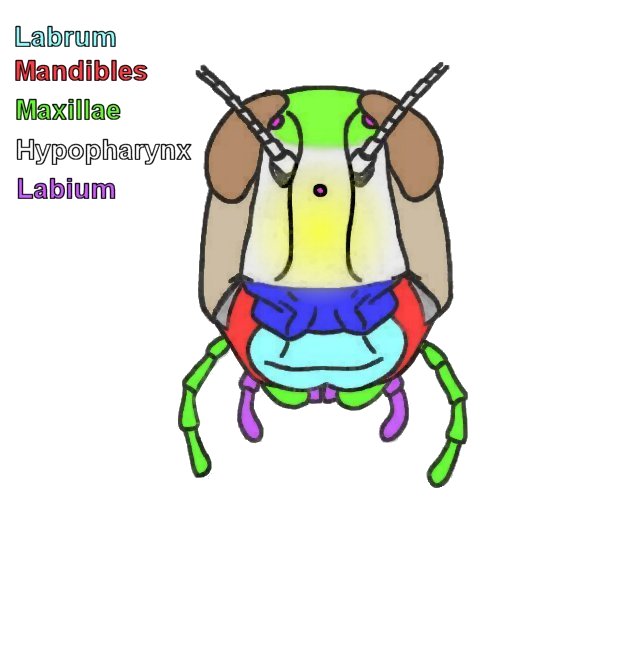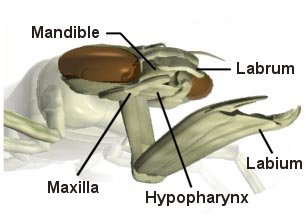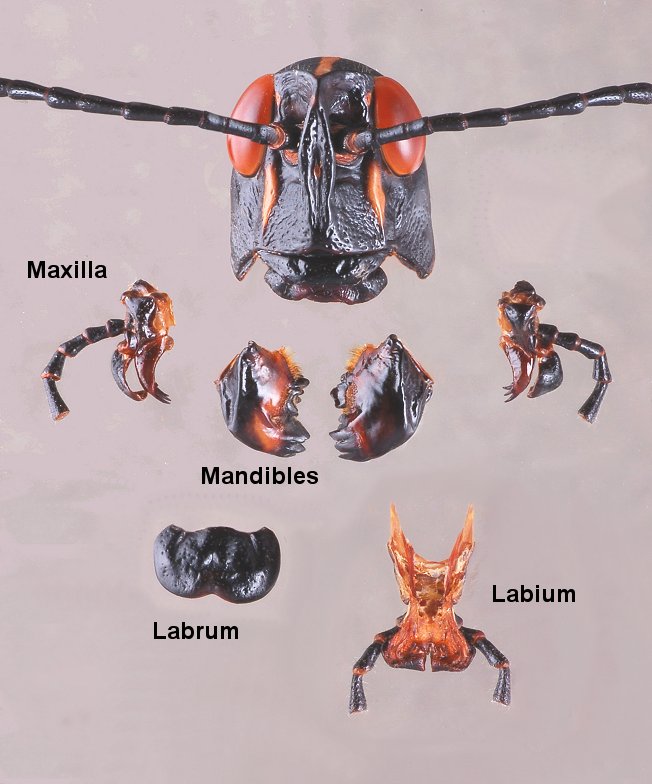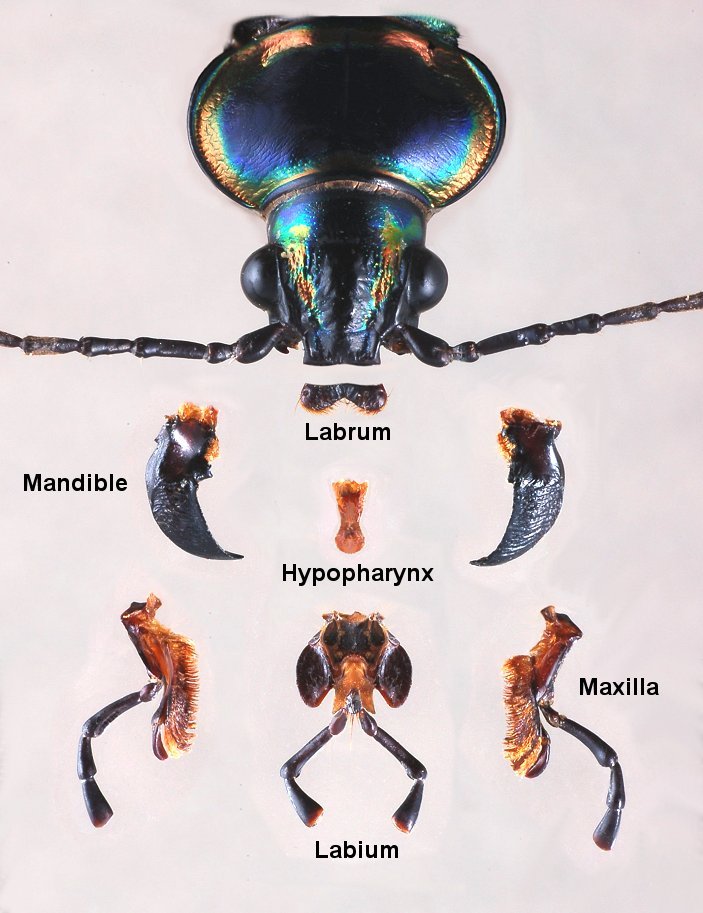Mouthparts
The ancestors of present-day insects were probably worm-like arthropods with a simple mouth opening near the front of a bilaterally symmetrical body. Over many eons of time, tissues and appendages near the mouth opening came to be adapted for gathering and manipulating bits of solid food. As insects evolved, they became more complex, expanded in range, and adapted to new food resources. The structure and function of their mouthparts changed right along with their evolving diet and life style. This is an excellent example of adaptive radiation (an evolutionary process in which two or more populations, exposed to different selective pressures, diverge from a common ancestor). Examples of adaptive radiation can be found just about everywhere in the insect world (think about variability in legs, wings, and antennae, for example). Entomologists pay close attention to mouthparts because their structure allows us to infer what type of food is consumed — plant or animal, solid or liquid, dead or alive. (Remember, “Form Follows Function” in biology). Knowing something about an insect’s diet leads us to even more information about it’s ecology and natural history.
Mandibulate Mouthparts
In all “primitive” insects, the mouthparts are adapted for grinding, chewing, pinching, or crushing bits of solid food. These are known as “mandibulate” mouthparts because they feature prominent chewing mandibles. There are five basic components that form these mouthparts:









